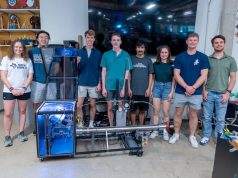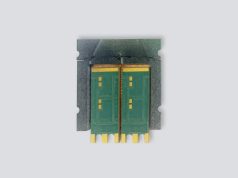Using advanced tissue engineering techniques and a 3D printer, researchers from Weill Cornell Medicine and Cornell Engineering have produced a replica of an adult human ear that looks and feels natural.
The study, published in the journal Acta Biomaterialia, promises transplants with precisely defined anatomical structures and correct biomechanical properties for people born with congenital malformations or who have lost an ear later in life.
“Ear reconstruction requires multiple surgeries and an incredible amount of artistry and finesse,” said, Dr. Jason Spector, chief of the Division of Plastic and Reconstructive Surgery at Weill Cornell Medicine and NewYork-Presbyterian/Weill Cornell Medical Center and a professor of surgery (plastic surgery) at Weill Cornell Medicine. “This new technology may eventually provide an option that feels real for thousands needing surgery to correct outer ear deformities.”
Many surgeons currently use cartilage harvested from the ribs to form a replacement ear, which can be painful and leave scars. Although the resulting graft may resemble the other ear, it usually does not have the same flexibility.
To produce a more natural-looking replacement ear, the researchers used chondrocytes, the cells that form cartilage. In previous studies, Dr. Spector used animal chondrocytes to populate a scaffold made of collagen. These grafts initially developed successfully, but lost their well-defined topography over time. To address this problem, the team used sterilized animal cartilage in complex-shaped, ear-shaped plastic scaffolds created on a 3D printer based on data from a human ear. These pieces of cartilage served as internal reinforcements to promote the formation of new tissue within the scaffold.
“Because the cells tug on the woven matrix of proteins as they labor, the ear contracted and shrank by half,” said Dr. Spector.
Over the next three to six months, the structure developed into a cartilage tissue that faithfully reproduced the anatomical features of an ear. Biomechanical studies confirmed that the replicas had a flexibility and elasticity similar to that of human ear cartilage, although the material was not as strong as natural cartilage.
Dr. Spector plans to solve the problem by adding chondrocytes, ideally those taken from a small piece of cartilage from the recipient’s other ear. These cells would form the elastic proteins that make ear cartilage so robust, creating a graft that is biomechanically very similar to the native ear.
Subscribe to our Newsletter
3DPresso is a weekly newsletter that links to the most exciting global stories from the 3D printing and additive manufacturing industry.
























